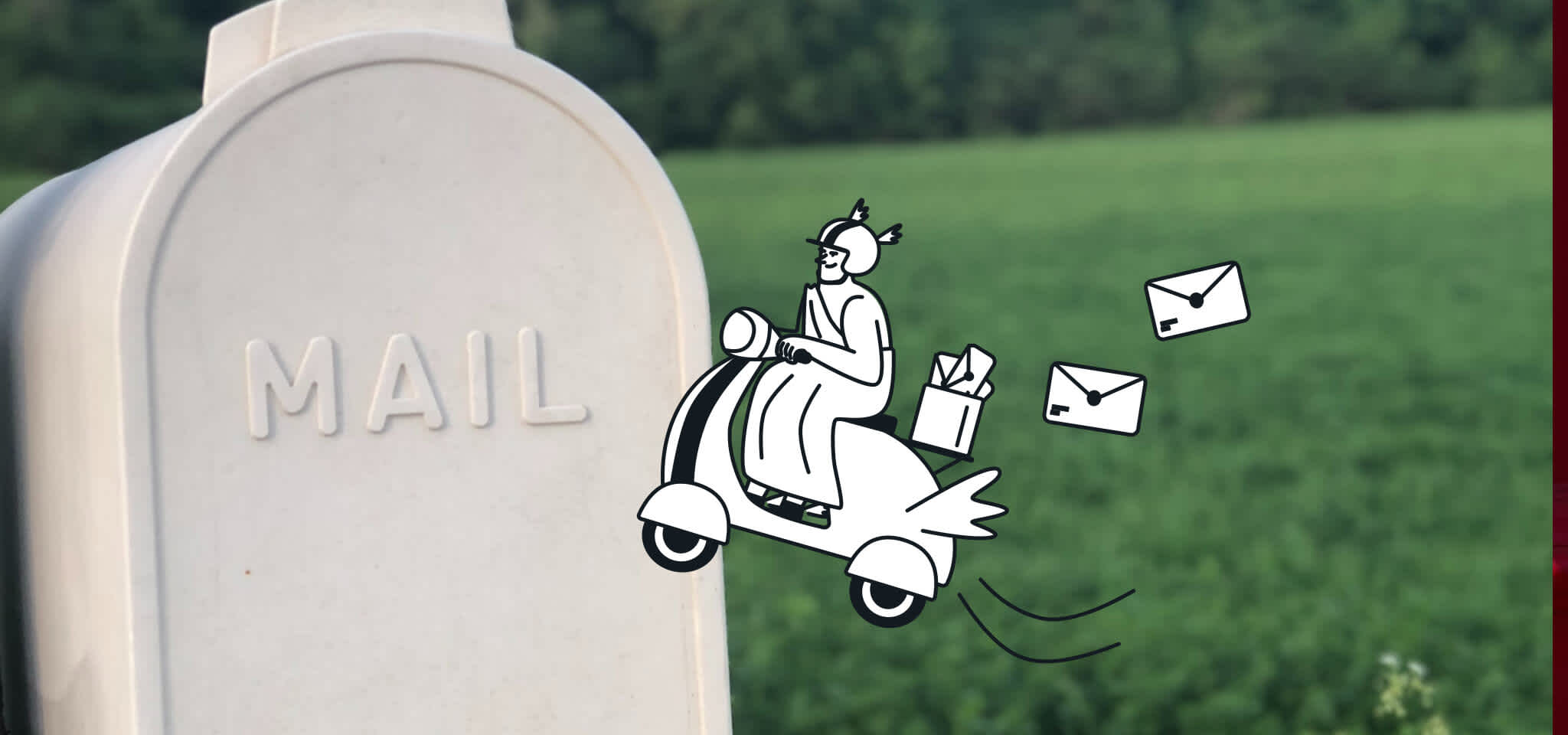Deliverability
8 ways to avoid ISP Blocklist
You've been blocked from sending your content to your audience. Here are eight tips to optimize your content and stay off the ISP blocklist.

PUBLISHED ON
The Internet Service Provider (ISP) blocklist is probably your worst nightmare.
Ending up on the blocklist is like having your domain name and IP address kicked out of the club, dropped from the mail server, and locked behind a firewall. (Plus, they threw away the key.)
Think of the ISP blocklist as a jail for internet marketers. When you’re on the ISP block list, you’ve been given the dreaded label of a spammer or spambot, and now you’re blocked from sending content to your audience. Did this happen to you? Or are you worried that your content might sound the spam alarm, affecting your reputation with customers and costing you revenue?
Stick around because we’ve got eight ways to avoid the ISP email blocklist. But before we talk about that, we’ll briefly explain what ISP blocklisting is and how marketers become blocklisted in the first place.
Table of contents
1. Ask users to add you
2. Don’t use link shorteners
3. Manage your contact list
4. Stick to a schedule
5. Set up a Sender Policy Framework
6. Send emails like a human
7. Conclude emails like a human
What is ISP blocklisting?
ISP blocklisting is when internet providers release a list of known spam traps, including different IP addresses and domain names of origin.
This is when you get flagged as a spammer and your emails are blocked from being sent to people. It can be quite challenging to get off the ISP blocklist. And not being able to send emails can cost you your reputation with clients and revenue for your business. This is also referred to as ISP blacklisting, a term the industry is trying to get away from. That includes blacklisting, the email blacklist, or the IP blacklist.
The information on these ISPs comes from users who report receiving spam. Once an IP address or domain name is registered, global audiences can start blocking them. These blocklists keep undesirable or dangerous emails out of people’s inboxes.
But what if you’ve spent hours writing copy or crafting the perfect email service marketing campaign, only to have the email blocked out by some firewall, spam filter, or anti-virus cybersecurity because you didn’t know you’re on the blocklist? According to Return Path, a surprising 20% of businesses in the U.S. have been blocklisted. These are “white hat” – or legitimate email marketers – trying to help users who accidentally trip up the ISP algorithms to catch malicious spammers.
This happens when these marketers use tactics similar to those seen in spam emails, including social manipulation tactics, hidden infectious software to control a user’s computer (botnets), and others.
Your clients will miss relevant content that they’ve signed up to receive if this happens.
Tips to stay off the ISP blocklist
Marketers end up blocklisted when they push more frequent promotions or use aggressive language in their messaging. Many of them end up on the ISP service blocklist around the winter holiday season. Do yourself a favor and use these tips to avoid the internet’s naughty list:
1. Ask users to add you
Even if you have a current or future client’s email, we suggest asking permission before sending an email campaign their way (otherwise known as permission-based marketing). After all, unsolicited commercial messages often get flagged as spam.
Even if they don’t, when people receive an email they weren’t expecting, their first thought is usually something like, “Wait, did I sign up for another newsletter?” When that happens, you’re likely to be blocked. Your message could even become undeliverable for several other reasons, like the recipient unsubscribing from your email list or moving your email to junk.
To prevent any of this uncertainty, we encourage you to consider your relationship with your intended audience as one that should be nurtured. For example, if you can get onto a recipient’s allowlist, you will be on a list of IP addresses that are allowed to bypass filters or anti-spam engines. This causes ISPs to see you as a customer’s personal contact, which increases your email deliverability.
2. Don’t use link shorteners
We’ll be the first to admit that we love URL shorteners because long URLs just look messy. But if you’re looking to optimize your content, you might want to embrace the chaotic nature of extended domain names.
Most generic domain names that come from URL shorteners have already been blocklisted. Their simplicity makes them a lovely tool for spammers to share malware or hide phishing content in plain sight. By trying to make a link more attractive to click with a URL shortener, you’re almost guaranteed to make sure that your audience’s mouses hurry in the opposite direction.
Each email you send affects your bounce rate, which measures the percentage of email addresses on your contact list that received your email compared to those that were “bounced” by a spam filter put in place by an ISP.
The higher your bounce rate, the worse your sender reputation, and the more likely you’ll get blocklisted. The good news is that there are some best practices to ensure that your bounce rate stays low and avoid any anti-spam filters, keeping you and your content off of ISP blocklists. The next few tips will help with that.
3. Manage your contact list
You should regularly manage your contact list to ensure it’s up to date and that any unsubscribes are removed from the list. By validating the email addresses on your list, you’ll keep your real-time delivery high and your bounce rate low.
Remember that individuals sometimes change their email addresses, too. Most folks don’t hang onto their cutekitty@hotmail.com address for business. Sending to inactive email addresses or customers who have opted out damages their trust in you and affects your deliverability rates. No one wants unsolicited emails in their inbox.
You can work with your tech team to automate this process – or Mailjet. Mailjet’s Event API is designed just for this.
4. Stick to a schedule
One of the more overlooked strategies for successful content optimization is to send out regular content. Maintaining a dependable schedule means your opted-in audience members are more likely to positively receive your emails. They’ll think of your emails as timely content that provides them with value, increasing your reach and impressions.
Even though you’re probably developing content that you hope will be consumed at scale, it’s essential for the individuals receiving your content to think you or your business are sharing information organically. Sending content too often is “spammy,” but sending on an irregular schedule can be off-putting and lead an individual to unsubscribe. Find a happy, realistic medium for your mailing schedule, and your audience will be satisfied, which will keep your metrics where they need to be.
5. Set up a Sender Policy Framework
A Sender Policy Framework (SPF) is a technique that adds credibility to marketing emails by sending notifications of authentication within the mail server to confirm that the email is a genuine article.
Think of SPF as a signature that proves that these emails are coming from a verified domain name or IP address that you have specified. These records are crucial in maintaining email security and thus empower recipients to open an email they receive from you with confidence. An SPF record helps avoid ISP blocklists by boosting the overall deliverability of each email you send because spammers can’t access your domain name to attack unsuspecting victims.
And, because SPF records verify your and your IP address as the sender, phishers can’t forge your IP address or email address to do their dirty work. By relying on SPF records, you’ll effectively elevate your reputation as a sender and show those ISP blocklists that the buck stops with you regarding email security.
6. Send emails like a human
Sometimes, email copy isn’t high on our list of priorities. But it should be. Using the exact templates you copied and pasted from the internet in your scheduled email blast is not going to provide any value and is only going to hurt your email engagement.
Comedians don’t tell the same jokes every night, and you shouldn’t send the same email as every other company. Your audience is savvy, and when they see a low-effort email, it looks like spam. If your clients think spam, you’ve got yourself a one-way ticket to the ISP blocklist. Email templates are a great tool, but you need to customize them to make them unique and personal for them to really succeed.
Give your emails some personality and pizzazz. To seem warmer and more genuine, we recommend using colloquial language, references current to pop culture, or better yet, using the word pizzazz. This keeps your emails sounding sincere and human and leads to more positivity and clicks.
7. Conclude emails like a human
Before sending your email, ask yourself how your high school English teacher would feel about you sending it. Try to give yourself some time to proofread the copy to make sure all the spelling and grammar are up to snuff, and use a pre-deployement platform like Sinch Email on Acid to carry out the necessary checks before pressing Send.
You should also always clean up the formatting. Ask yourself if the format of your text makes it look messy. People can be pretty superficial when it comes to email, so make sure you’re putting forth the best email you can, including signing off with a clean and simple email signature.
Containing unnecessary links or images signals to the reader that the email may have come from some phisher or bot. Showing that your emails are coming from the real you is a surefire way to avoid spam complaints and the ISP blocklist.
Wrapping up
Unfortunately, spammers continue to fine-tune their “craft,” but ISPs constantly refine their algorithms to combat this. And sometimes, legitimate marketers get caught in the crossfire.
The suggestions we’ve outlined here will help optimize your content and authenticate your IP address. Yes, there are other ways to avoid the ISP blocklist, but these are a great start. We also encourage you to stay vigilant and look up the latest deliverability trends, spam, and security issues.
Want to make sure you never miss an update? Sign up for the Mailjet newsletter to get news, tips, and trick directly in your inbox!








